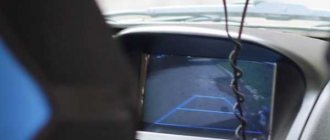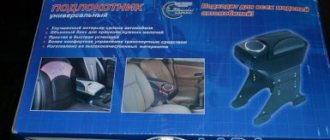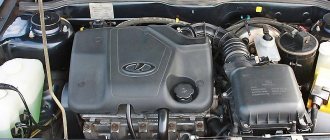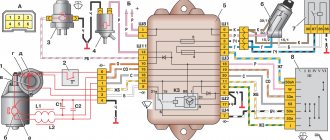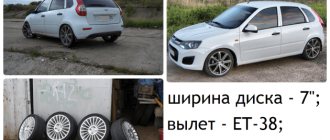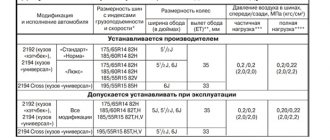Lada Kalina: dimensions of different car modifications
For the Lada Kalina car, the dimensions are designed well for Russian cities and courtyards. She doesn't look overly petite. There is some solidity in it, and at the same time, “Kalina” is able to find a place for itself in the tightest parking lot. What is not a competitive advantage in these difficult times? Especially when looking for some free spot to leave the car near the house.
Dimensions value
The Kalina family is small but friendly. Some are a little bigger, some are a little smaller, but together they can make it to the parade. The body of the Lada Kalina is made in several modern modifications: sedan, hatchback, station wagon, cross and sport. Their overall dimensions do not vary much.
| Sedan | Hatchback | Station wagon | Cross | Sport | |
| Length, mm | 4040 | 3850 | 4040 | 4104 | 3943 |
| Width, mm | 1700 | 1700 | 1700 | 1700 | 1700 |
| Height | 1500 | 1500 | 1500 | 1560 | 1450 |
| Weight | 1098 | 1098 | 1128 | 1125 | 1150 |
| Base | 2476 | 2476 | 2476 | 2476 | 2476 |
| Clearance | 160 | 160 | 145-160 | 183 | 150 |
The width and wheelbase are the same for all, as it should be for related models. But the length, height and ground clearance are different. Accordingly, the volumes and masses are different. The history of Lada models has seen long stagnation and a period of failure. In 2004, the release of the first Kalina from the assembly line ushered in a new era. Since then, new items appear almost every season, and the ranks of owners of the most popular car in Russia are growing from year to year.
The geometric dimensions of the body are important, but no less interesting is the volume of the trunk. All Kalina models are designed to allow the rear seats to be folded forward and increase luggage compartment space. The most voluminous trunks are for the sedan, station wagon and cross: 355/670 liters. “Hatchback” and “sport” are more modest - 240/550 hp. It’s also not bad, as many city car owners will agree with.
In the ranks of Kalina there is another model - Lada Kalina City (Oka-3), made on the VAZ-1117 platform. It appeared in 2005 and for some time was considered a replacement for the Oka small car, but this assumption is incorrect. It has almost the same dimensions, height and width as other Kalinas, only the length is 3650 mm. The result was a version of the Kalina hatchback, shortened by 20 cm and correspondingly lighter in weight - 980 kg. Next to the miniature Oka it looks incomparably larger. "Kalina City" is not widely used, but it can still be found on Russian roads.
There is another dimensional indicator that is rarely interested in until they get stuck in a rut. At this point, some people discover the fact that the distance between the front wheels is different from the distance between the rear. This parameter is called: front and rear wheel track. For the “sedan” and “hatchback” with “station wagon” - 1430/1414 mm, for the “sport” - 1431/1432 mm and for the “cross” - 1430/1418 mm.
The difference in millimeters may not be noticeable to the eye, but it is easy to feel when a few millimeters are not enough to get out of an icy rut on a winter road. The track size turned out to be wrong.
A new generation is replacing
In 2013, Russian roads welcomed the new Lada-Kalina 2 model. It immediately caught the fancy of those who were passionate about VAZ products, and began to win new fans. In terms of body models, Kalina 2 is currently limited to hatchback and station wagon.
They repeat their predecessors in height 1500 mm, ground clearance 210 mm, wheelbase 2476 mm and track: rear 1414 mm / front 1431 mm.
Other dimensions are not the same. Body control dimensions show:
- “hatchback” - length 3893 mm and width 1700 mm;
- “station wagon” - 4084 mm and 1539 mm;
- The trunk volume is the same - 260/361 liters.
Nothing in the world is perfect, there will always be critics and detractors. Nevertheless, even a cursory glance at what ordinary users write, sharing their impressions without the goal of advertising anyone, confirms: “Lada-Kalina 2” is a good city car. If we add to the above such important parameters as “price - quality” and “gasoline consumption in the city”, then it can be considered one of the leaders in its market segment.
The same opinion can be heard in any “garage fraternity”, where they express themselves artlessly, but with knowledge of the matter. Popular approval has been received, as has the expectation of new models.
1ladakalina.ru
Malfunctions: causes, elimination
In operation, motor 11194 showed its worst side, as it “inherited” all the faults of previous versions, and added its own problems to users:
| Valve bend | Timing belt is torn or fallen off | periodically check the belt or replace it |
| Extraneous sounds | knocking of pistons, bearings, valves | replacement with repair kit |
| Overheat | failure of the pump, thermostat | installation of new units |
| the engine stalls or the speed fluctuates | malfunction of the sensors TPS, DXX | repair or purchase of new sensors |
| increased consumption of gasoline and oil | misadjustment of valves, intake tract, wear of catalytic collector, wear of rings | replacement of parts |
The cooling system in the 11194 motor is considered trouble-free, with the exception of the pump with a polymer impeller. Despite the fact that the internal combustion engine has been discontinued, components for it are produced by AvtoVAZ and Federal Mogul.
Cars will rise in price by 7-8%
Nevertheless, Alor Group analyst Alexey Antonov believes that an increase in the VAT rate to 20% could ultimately lead to an increase in car prices by as much as 7-8%. According to his assessment, the effect of increasing the VAT rate will be most fully revealed in February-March 2019, when inventory balances from 2022 will be sold out, and new lots will be purchased taking into account the increased rate. The second round of increases, in his opinion, will take place in the second quarter of 2022, when manufacturers run out of stocks of components purchased at old prices.
“The difference between rates of 18% and 20% is not so significant, and for the end buyer, it would seem, the cost of the car should not change significantly,” Antonov explained. — Technically, the negative effect for the end consumer should be almost unnoticeable, only +2% to the current cost. But in practice, both dealers and manufacturers at all stages are sure to take the opportunity for another round of price increases as their costs rise. Thus, the production of a car involves a long procurement chain, and VAT is paid at each stage, which makes an increase in the cost of the final product inevitable.”
Head of AvtoVAZ: “Under certain events we will have to raise prices”
At the same time, the expert is confident that an increase in the VAT rate will inevitably affect the cost of all categories of vehicles, regardless of the country of origin. “This is a tax that the end consumer pays on the entire cost of the product, and regardless of whether the car has gone through the entire production chain in Russia or abroad, its value should change by an equal amount,” the analyst says. “But taking into account the fact that for localized cars the chain during which increased VAT will be paid is much longer, it cannot be ruled out that it is localized brands that will increase prices more actively. However, the end consumer most likely will not notice this, since, as a rule, dealers distribute additional costs across the entire line of cars sold, both imported and localized.”
Conclusion
The VAZ 11193 engine is a continuation of the beloved 1118 power unit. Thus, the engine showed itself on the positive side. As practice has shown, it is quite easy to maintain and repair, and the pricing policy for consumables is low, which allows this engine to remain in the budget price category.
Also, superficial tuning is easily carried out, but if the car enthusiast wants more, he will have to turn to professionals.
Source
Specifications
The technical characteristics of the VAZ 11193 engine are not much different from its predecessor 1118. In fact, the engines can be called identical, but differences still exist. So, let's look at the technical characteristics of the power unit.
| Name | Characteristic |
| Brand | Lada |
| Model | 11193 |
| Engine capacity | 1.6 liters (1596 cc) |
| Power | 102 |
| Location | Transverse |
| Consumption | 9.6 liters for every 100 km |
| Number of cylinders | 4 |
| Number of valves | 16 |
| Piston diameter | 82 mm |
| Cooling | Liquid |
| Fuel | Gasoline (gas - as additional equipment) |
| Torque | 137 Nm |
The VAZ 11193 engine has become a logical continuation for the Kalina family, and it is also installed on the 10th generation of Lada vehicles. As you can see, the engine is quite powerful and is enough for such a small car as Kalina. If we talk about 10th generation cars, then it is quite weak.
Power unit repair
Repairing the VAZ 11193 power unit is quite simple, since in terms of design features it is not much different from the 1118 and its modifications. The only typical design difference is a sixteen-valve cylinder head and an improved version of the water pump. But even this cannot be handled by an experienced motorist.
As previously stated, some engine elements should be changed on time. Thus, untimely replacement of the timing belt can lead to bent valves and even worse consequences. Thus, repair operations should be carried out on time.
Maintenance and repair of Lada Kalina (VAZ-1119 Lada Kalina)
The next problem in the interior is the colony of “crickets” entrenched in it, the fight against which may become the life goal of the owner of the first generation Kalina. Let us name the main places of their settlements.
The creaking of the driver's seat can be treated by removing the trim and placing foam rubber in the coils of springs. In the dashboard, the plastic edging around the glass may rattle - madeline sizing (a material that allows you to compensate for friction and eliminate the occurrence of sounds). The light in the glove box may rattle - electrical tape helped. In the center console (“beard”) the wiring and cables are noisy – the foam is covered. The creaking of the “ski” under the windshield can be eliminated by using biplast and foam rubber. Well, don’t forget about the already mentioned wiring in the door drains - it can knock in the cavities when moving. Foam rubber or anything else that comes to hand will help. This is not a complete list of the habitats of “crickets” and how to combat them. But the direction of thought, I think, is clear.
Now let's look at the car from the outside. In general, paintwork cannot be called bad - if you don’t strip the paint down to the metal, then you shouldn’t be afraid of rust. But more serious defects must be “treated” immediately, at least with a rust converter and varnish. Let’s say separately about the VAZ badge on the fifth door: the rust around it is as much a trademark of Kalina as the logo itself. It arises from the fact that some shadowy genius figured out not to glue it, but to fasten it through rubber seals with tin washers. This is where it all starts with the tin: it rusts, a beautiful stain creeps across the badge and the fifth door. A radical method is to tear off the badge, clean everything, degrease and glue it, throw the washers in the trash.
If you plug your ears or don't pay attention to the squeaks, then the Kalina's interior isn't that bad. It is still quite modern, it is pleasant to sit here, but most importantly, it is a wonderful overview. Large mirrors, narrow counters, good glass area - all without any complaints. Let's try to go for a ride.
The pedals, for my taste, are somewhat small and indistinct, but you can get used to them. The situation is much worse with the gearshift lever. There is a decent vibration coming from it, but this is the only thing that firmly connects it with the car - the shifts are very indistinct. But even here you can learn, especially since there are no other comments about the car. It accelerates fun, the response to the steering wheel is wonderful, turning around on the spot is no problem. This is probably the best I've seen for a beginner. As a first car, especially in the city, it’s just right.
At speed, the rear part “gallops” a little (the short wheelbase, light weight and beam do their job), but there is nothing criminal here either. If you remove all the “crickets” and the hum of the gearbox, then it’s generally great, especially for the money Kalina costs. And its repair, not to mention its maintenance, will not make the owner a beggar. Nervous, maybe, but definitely not poor.
Technical characteristics of Lada Kalina
Today, LADA Kalina is presented in modifications with three body types - “station wagon” LADA 1117, “sedan” LADA 1118 and “hatchback” LADA 1119. What distinguishes the LADA 1117 from the sedan and hatchback is the originality of the rear lights and the fifth door, which is very similar in design the Oka door, the elongated roof prevent dust and exhaust from entering the cabin, and a good view to the rear is provided by massive curved glass, equipped with an individual washer. The rear door opens using a button, i.e. if the lock is not locked, then the keys will not be required, which is very convenient when traveling outdoors, when you need to often look into the trunk. And the trunk volume is suitable for traveling; when the rear seat is folded, it can hold almost 650 liters. The lock is recessed into the floor, which allows you to freely load and unload the car with heavy or large cargo without fear of damaging or snagging them.
LADA 1117 is a very practical car in which everything is in its place, compact and easily accessible. The spare tire is located under the floor, where the wheel wrench and jack are also stored, on top of this entire structure is covered with hardboard, so the floor of the trunk is flat, and the spare tire does not take up extra space. There are cargo securing brackets on the back of the rear seat and on the bottom of the trunk.
The 1117 station wagon is currently available in three trim levels: “normal”, “standard” and “luxury”. “Standard” is equipped with an 8-valve 1.6 liter engine. and power 5200 rpm. The “norm” package has two types of engine – an 8-valve 1.6-liter engine. and 16-valve 1.4 liter. As for the luxury modification, this is the pinnacle of perfection of the Kalina family. In addition to two types of 16-valve engines with volumes of 1.6 and 1.4 liters. This model is additionally equipped with ABS anti-lock braking system and front airbags.
The interior of the LADA Kalina does not shine with sophistication, but is capable of fully satisfying the unpretentious car enthusiast. The interior upholstery is tapestry with leather inserts or velvet, as provided for in the “luxury” package; the rear seat is separate, as has recently been customary to produce in Europe, equipped with headrests.
As for the comfort of the interior, in this case the designers and engineers of AvtoVAZ OJSC exceeded all consumer expectations. After all, the station wagon is equipped with a modern climate system, electric power steering, an electric heating system for exterior mirrors, the mirrors themselves are anti-dazzle, there is a heating system for the front seats and electric windows, and the steering column is tilt adjustable. There is a single key for door locks and ignition, and for forgetful drivers there are buzzers for abandoned keys, lights on, reverse gear and vehicle diagnostics. Also available for this car are thermal glass and cabin air filters.
Constructions
Engine 11193 is designed for installation on the Lada Kalina car of various modifications. Volume 1.6 liters and power 102 hp. Enough for this car. An in-line engine is located transversely in the engine compartment. 4 cylinders with a diameter of 82 mm consume 9.6 liters of gasoline per 100 km.
The design features include:
- frequent damage to the drive system belt, blockage of oil, fuel and air filters;
- possible defects of piston rings;
- decrease in oil pressure.
Features of motor 11193
To avoid serious consequences as a result of these malfunctions and increase the service life of the engine, it is recommended to change the belts on it after 50-65 thousand km of the vehicle.
The parts are made of high quality steel and have increased strength. To increase power by 10%, the throttle valve is equipped with an electric drive. This also ensured a reduction in exhaust gas toxicity. The valve mechanism consists of 16 valves. A block with an improved cylinder surface meets the requirements of the times. You can find it by color: block 11193 is painted gray.
If you have to sort out the unit, after removal the following are dismantled:
- pump operating in the cooling system;
- generator;
- electric starter;
- fuel system pump;
- collectors;
- camshaft belt;
- valve cover;
- flywheel;
- clutch mechanism;
- cylinder head.
The engine can be installed on the tenth car model. All bosses and mounting holes of the cylinder block are suitable for this. It is not advisable to do tuning or modifications so as not to damage the engine.
Design 11193
Replacement of ICE block 2112 with VAZ 11193 block
#1 OFFLINE kamaz-utek
- C
- 10 messages
- Top
#2 OFFLINE maxtor
Post edited by maxtor: 09 March 2011 - 10:45
- Top
#3 OFFLINE Corona
- Top
#4 OFFLINE kamaz-utek
write to the factory and ask for a letter with recommendations for replacement, it will be written there that replacement is possible if such and such conditions are met, and then with this letter to the traffic police, you will write there that the replacement was carried out in accordance with the recommendations of the factory and if something happens all responsibility is on you. In general terms, yes, by the way, there must be all the documents to track the full history of the unit from the factory, who resold it to whom, receipts, copies of the contract, etc. At one time, all this took me more than 3 months, are you ready for this?
ps by the way, engine numbers will soon not be taken into account and checked, and even on the certificate they will not be indicated according to the new law, so you can forget.
- Top
#5 OFFLINE maxtor
Thanks for your responses. But it seems to me that writing to the factory is like writing to the village for my grandfather. Could you please provide more precise coordinates or links. The car with the Kalinovsky block has been driving for more than 3 years, but the time has come to re-register, and then it turns out that it is not possible.
- Top
#6 OFFLINE maxtor
Post edited by maxtor: 09 March 2011 - 15:37
- Top
#7 OFFLINE kamaz-utek
Maybe I should call for you and run to the traffic police? No, you’ll have to fuss yourself, all the phone numbers are on the AvtoVAZ website. It’s clear that you won’t get the right person the first time, and you won’t get an answer the next time or even the next day. this is a very long process. Either be prepared for this, or install a regular block.
- Top
#8 OFFLINE VicktorVR
- Top
#9 OFFLINE kamaz-utek
- Top
#10 OFFLINE -=EvgeN=-
- Top
#11 OFFLINE Bars
Constructions
Engine 11193 is designed for installation on the Lada Kalina car of various modifications. Volume 1.6 liters and power 102 hp. Enough for this car. An in-line engine is located transversely in the engine compartment. 4 cylinders with a diameter of 82 mm consume 9.6 liters of gasoline per 100 km. The cylinder head is higher than its predecessor. Its height is 197.1 mm due to the increased piston stroke. The engine is equipped with an electronic ignition system.
The design features include:
- frequent damage to the drive system belt, blockage of oil, fuel and air filters;
- possible defects of piston rings;
- decrease in oil pressure.
To avoid serious consequences as a result of these malfunctions and increase the service life of the engine, it is recommended to change the belts on it after 50-65 thousand km of the vehicle.
The parts are made of high quality steel and have increased strength. To increase power by 10%, the throttle valve is equipped with an electric drive. This also ensured a reduction in exhaust gas toxicity. The valve mechanism consists of 16 valves. A block with an improved cylinder surface meets the requirements of the times. You can find it by color: block 11193 is painted gray.
If you have to sort out the unit, after removal the following are dismantled:
- pump operating in the cooling system;
- generator;
- electric starter;
- fuel system pump;
- collectors;
- camshaft belt;
- valve cover;
- flywheel;
- clutch mechanism;
- cylinder head.
Defective parts are immediately replaced. Oil seals, seals and gaskets are replaced. Assembly is carried out in reverse order. Before driving, it is necessary to inspect the main components of the car and constantly monitor the readings of technical fluid level sensors.
The engine can be installed on the tenth car model. All bosses and mounting holes of the cylinder block are suitable for this. It is not advisable to do tuning or modifications so as not to damage the engine.
Tuning
Tuning the 11193 unit model can be done immediately or divided into parts:
- software;
- mechanical.
Many car enthusiasts have heard about chip tuning. This is the name given to the computer’s firmware, as a result of which it will begin to perform certain operations. Chip tuning is divided into:
- standard;
- improved power;
- improved efficiency.
Mechanical improvements are rarely used due to their high cost and long duration. Mechanical work consists of:
- boring of cylinders for installation of pistons of increased diameter;
- replacement of connecting rods and bearings;
- installation of sports camshafts;
- replacing the valve mechanism with a lightweight version;
- external modification of the cylinder block.
External modifications include replacing the pipes with silicone ones, replacing the generator and water pump. An air filter and a sports throttle are also installed. Such modifications can increase engine power by 50 hp.
VAZ 1119 (Lada Kalina hatchback)
This model appeared back in 1999, but serial production began only in 2006. The first copies had a number of serious shortcomings, which were subsequently eliminated.
https://youtube.com/watch?v=EecI1aRQ25I
Traditionally, the hatchback modification is especially popular among young people. All parameters of this car meet modern requirements. This includes a spacious interior, high ground clearance, air conditioning, a filtration system, ABS, heated seats and much more.
For the first time in the VAZ family, they focused on increasing the safety of both the driver and passengers. In addition to the already familiar pillows, a more durable bumper was installed, and the roof also has a reinforced structure.
The VAZ 1119 model is present on the market in three versions:
- with a 1.4 liter engine producing 89 hp. With.;
- with an increased engine volume of 1.6 liters, 81 liters. With.;
- model with increased power - volume 1.6 liters, but 98 liters. With.
Characteristics of Lada Kalina 1119
The five-door class B hatchback VAZ 1119 Lada Kalina has been produced by the Volzhsky Automobile Plant in Togliatti since the end of 2009, but to this day the model remains popular among car enthusiasts in Russia and the CIS countries. The car is well suited for driving in urban environments due to its maneuverability due to the body length, which is shorter than that of the Lada Samara family of cars. The comfortable interior, which is equipped with seat belts for front and rear seat passengers, is equipped with air conditioning and airbags for the driver and front seat passenger.
The dynamic characteristics of the Lada Kalina 1119 depend on the engine, which is available in three versions:
- With a 1.6 liter engine from the VAZ 21114 model, which has 8 valves and produces 81 hp. and a torque of 120 N/m 3000, meeting Euro-3 standards, produced since 2006.
- 16 valve unit VAZ 11194 with a power reserve of 89 hp. volume of 1.4 liters, with a torque of 127 N/m 4800, meeting Euro-3 standards, produced in 2007.
- And with a VAZ 21126 engine with a power of 98 hp. with a total volume of 1.6 liters, equipped with 16 valves, with a torque of 145 N/m 4000, meeting Euro-3 standards
In the front part, the car body rests on an independent suspension with telescopic hydraulic shock absorbers, which are supported by conical springs. At the bottom of the suspension there is a stabilizer bar with wishbones. The rear suspension is equipped with new generation WEBER shock absorbers, which maintain vehicle stability during sharp turns and braking. The basis of the entire rear suspension structure is a beam to which trailing arms are welded and connected by a cross member. Inside the beam there is a stabilizer bar, the ends of which are welded to the arms.
The hatchback's steering wheel rotates without much effort thanks to the electric power steering. The instrument panel is small in size, but despite this it has good information content and is backlit at night.
The VAZ1119 car model is 3850 mm long, the distance between the right and left doors is 1700 mm, the roof is at a level of 1500 mm from the ground. The distance between the front and rear wheels (wheelbase) is 2470 mm with a ground clearance of 185 mm. The track between the front wheels is 1430 mm, between the rear wheels 1410 mm. The weight of the car is 1080 kg, the fuel tank holds 50 liters of A-95 gasoline.
Tuning 21114
By default, the 21114 engine has a power of about 82 hp. With. To safely increase this characteristic to 120 hp. With. Several types of tuning are used:
- replacing the standard camshaft - modifications of the Dynamics 118 or Nuzhdin 10.93 are usually used;
- installation of a split-type gear - additional phase adjustment is required, power increases to 85 hp. With.;
- 54 mm damper with receiver – it is necessary to install a zero resistance filter;
- modification of the intake tract - polishing the channels, ensuring their equal length;
- replacing the exhaust manifold - spider configuration 4:2:1 on the exhaust manifold (direct-flow);
- valve relief - T-shaped modifications are used;
- modification of the cylinder head - milling on a machine.
Additionally, instead of the standard piston group, you can install a lightweight kit from Priora, completely suitable in size. Chip tuning is useless for this engine.
Thus, the 21114 engine became an improved version of the basic version 2111. Most of the components and parts were used from the manufacturer’s previously existing engines to reduce costs while achieving Euro-3 standards. However, unique units also appeared, which were then used in subsequent versions of VAZ engines, for example, cylinder head and crankshaft.
Main parameters and characteristics of the engine
VAZ-21114-50; VAZ-21114-90:
- Modifications of Lada-Kalina: VAZ-11173, VAZ-11183, VAZ-11193;
- Engine type: four-stroke, gasoline, with spark ignition and fuel injection system;
- Number of cylinders - 4;
- The cylinder arrangement is in-line;
- Cylinder diameter - 82 mm;
- Piston stroke - 75.6 mm;
- Cylinder displacement - 1.596 l;
- Power system - multipoint injection;
- Ignition system - electronic distributed type;
- Rated power - 59.5 kW;
- Rated crankshaft rotation speed - 5100-5300 rpm;
- Maximum torque - 120 Nm (at 2800-3200 rpm);
- The minimum crankshaft rotation speed at idle is 800-850 rpm;
- Fuel - gasoline "Premium-95" GOST R 51105-97.
VAZ-11194:
- Modifications of Lada-Kalina: VAZ-11174, VAZ-11184, VAZ-11194, Lada-Kalina Sport (1.4);
- Engine type: four-stroke, gasoline, 16-valve with spark ignition and fuel injection system;
- Number of cylinders - 4;
- The cylinder arrangement is in-line;
- Cylinder diameter - 76.5 mm;
- Piston stroke - 75.6 mm;
- Cylinder displacement - 1,390 l;
- Power system - multipoint injection;
- Ignition system - electronic distributed type;
- Rated power - 65.5 kW;
- Rated crankshaft rotation speed - 5500-5700 rpm;
- Maximum torque - 127 Nm (at 4200-4800 rpm);
- The minimum crankshaft rotation speed at idle is 810-870 rpm;
- Fuel - gasoline "Premium-95" GOST R 51105-97.
VAZ-21126:
- Modifications of Lada-Kalina: Lada-Kalina Sport (1.6);
- Engine type: four-stroke, gasoline, 16-valve with spark ignition and fuel injection system;
- Number of cylinders - 4;
- The cylinder arrangement is in-line;
- Cylinder diameter - 82 mm;
- Piston stroke - 75.6 mm;
- Cylinder displacement - 1.597 l;
- Power system - multipoint injection;
- Ignition system - electronic distributed type;
- Rated power - 72 kW;
- Rated crankshaft speed - 5600 rpm;
- Maximum torque - 145 Nm (at 4000 rpm);
- The minimum crankshaft rotation speed at idle is 850 rpm;
- Fuel - gasoline "Premium-95" GOST R 51105-97.
Fuel consumption and dynamic characteristics: VAZ-11183, VAZ-11193
- Engine: VAZ-21114 (Euro-3);
- Fuel consumption (combined cycle) - 7.8 l/100 km;
- Maximum speed - 170 km/h;
- Acceleration time to 100 km/h is 13 s.
Fuel consumption and dynamic characteristics: VAZ-11184, VAZ-11194
- Engine: VAZ-11194 (Euro-3);
- Fuel consumption (combined cycle) - 7.0 l/100 km;
- Maximum speed - 165 km/h;
- Acceleration time to 100 km/h is 12.2 s.
Fuel consumption and dynamic characteristics: Lada-Kalina Sport (1.4):
- Engine: VAZ-11194 (Euro-3);
- Fuel consumption (combined cycle) - 7.0 l/100 km;
- Maximum speed - 165 km/h;
- Acceleration time to 100 km/h is 12.2 s.
Fuel consumption and dynamic characteristics: Lada-Kalina Sport (1.6):
- Engine: VAZ-21126 (Euro-3);
- Fuel consumption (combined cycle) - 7.8 l/100 km;
- Maximum speed - 170 km/h;
- Acceleration time to 100 km/h is 11 s.
Lada-Kalina refueling volumes:
- Fuel tank - 50l;
- Engine lubrication system - 3.5 l;
- Engine cooling system and interior heater (the use of mixtures of coolants of different brands is not allowed) - 7.84 l;
- Gearbox - 3.1l;
- Hydraulic brake system - 0.45l;
- Windshield washer reservoir - 5 l;
- Rear window washer reservoir - 5 l.
Comparison of different generations of Lada Kalina
The main and most obvious difference is the appearance. After restyling, Kalina received a new massive bumper in a modern design. The optics of the headlights have also changed, which is now complemented by daytime running lights. By the way, when the car was presented at the Moscow Motor Show, the DRLs were LED, but they are no longer available in the production model.
Changes are also visible from the side, and they are mainly caused by the bumpers. If the front one turned out to be massive, then the rear one, on the contrary, is small. The taillights have changed slightly in shape, and now part of them extends more to the side. The changes are also noticeable when looking at the rear headlight unit: they have become much larger and look more interesting than on the first generation station wagon.
Changes in the cabin
The interior has changed significantly after the change of generations. The developers began to use a completely different dashboard and a different instrument panel. There is no trace left of the first generation design. Controls for a modern climate control system have appeared. Depending on the configuration, a multimedia system with a touch screen can be installed. The display is located at the top and is covered with a special visor that prevents glare in bright sunlight. All controls are placed in separate blocks. The side air ducts are Granta style, but the center console uses rectangular vents.
Separately, it is worth mentioning the seats, which have also been updated. Now they have pronounced lateral support, and in top trim levels there is even a lift function, i.e. height adjustment.
Engine range
In total, the second generation Kalina uses three types of engines, all with a lightweight piston group.
- 8-valve engine from Granta. The weakest power unit in the line with a capacity of 87 hp. With. Everyone is familiar with the engine from the VAZ 2108, or rather, its early modification. At the same time, this is the most reliable engine with a service life of at least 200,000 km without major repairs.
- 16-valve engine from Priora. Installed without any significant changes, the power is 98 hp. With. according to your passport.
- New engine with 106 hp. With. The engine is 16-valve and is installed today, including on the Lada Vesta. It is distinguished by the presence of variable injection geometry and some other upgrades.
The previous generation could only boast of a Priora engine, and then only in the maximum configuration.
Transmission
The changes affected her too. Now, in addition to a manual transmission, Kalina began to be equipped with an automated robotic gearbox and even a full-fledged Jatco 4-band automatic transmission. The automatic transmission will be available in the maximum configuration and only with the top-end engine. Many motorists have been waiting for a very long time for a full-fledged automatic to appear on domestic cars. Yes, this is an old 4-speed gearbox, but it is reliable and inexpensive to maintain.
Suspension
AvtoVAZ engineers tried not only to change the appearance of Kalina, but also to make serious adjustments to all important components and assemblies. The changes also affected the chassis. The suspension is completely borrowed from Granta. Specialists from the Nissan-Renault concern made an invaluable contribution to the development and optimization of the unit settings. Compared to the old suspension, the changes are significant. Now the wheels have negative caster (as if the top side is piled inward). The car has become more stable on the road when making sharp turns. Improved handling and overall driving comfort.
Policy regarding the processing of personal data
1. General Provisions
This personal data processing policy has been drawn up in accordance with the requirements of the Federal Law of July 27, 2006. No. 152-FZ “On Personal Data” and determines the procedure for processing personal data and measures to ensure the security of personal data of individual entrepreneur Igor Mikhailovich Brazhnik (hereinafter referred to as the Operator).
1. The operator sets as its most important goal and condition for the implementation of its activities the observance of the rights and freedoms of man and citizen when processing his personal data, including the protection of the rights to privacy, personal and family secrets. 2. This Operator’s policy regarding the processing of personal data (hereinafter referred to as the Policy) applies to all information that the Operator can obtain about visitors to the website https://www.ami55.ru.
2. Basic concepts used in the Policy
1. Automated processing of personal data – processing of personal data using computer technology; 2. Blocking of personal data – temporary cessation of processing of personal data (except for cases where processing is necessary to clarify personal data); 3. Website – a collection of graphic and information materials, as well as computer programs and databases that ensure their availability on the Internet at the network address https://www.ami55.ru; 4. Information system of personal data - a set of personal data contained in databases and information technologies and technical means that ensure their processing; 5. Depersonalization of personal data - actions as a result of which it is impossible to determine without the use of additional information the ownership of personal data to a specific User or other subject of personal data; 6. Processing of personal data - any action (operation) or set of actions (operations) performed using automation tools or without the use of such means with personal data, including collection, recording, systematization, accumulation, storage, clarification (updating, changing), extraction, use, transfer (distribution, provision, access), depersonalization, blocking, deletion, destruction of personal data; 7. Operator - a state body, municipal body, legal or natural person, independently or jointly with other persons organizing and (or) carrying out the processing of personal data, as well as determining the purposes of processing personal data, the composition of personal data to be processed, actions (operations) transactions performed with personal data; 8. Personal data – any information relating directly or indirectly to a specific or identified User of the website https://www.ami55.ru; 9. User – any visitor to the website https://www.ami55.ru; 10. Providing personal data – actions aimed at disclosing personal data to a certain person or a certain circle of persons; 11. Distribution of personal data - any actions aimed at disclosing personal data to an indefinite number of persons (transfer of personal data) or familiarizing with personal data to an unlimited number of persons, including the publication of personal data in the media, posting in information and telecommunication networks or providing access to personal data in any other way; 12. Cross-border transfer of personal data – transfer of personal data to the territory of a foreign state to an authority of a foreign state, a foreign individual or a foreign legal entity; 13. Destruction of personal data - any actions as a result of which personal data are destroyed irrevocably with the impossibility of further restoration of the content of personal data in the personal data information system and (or) as a result of which the material media of personal data are destroyed.

